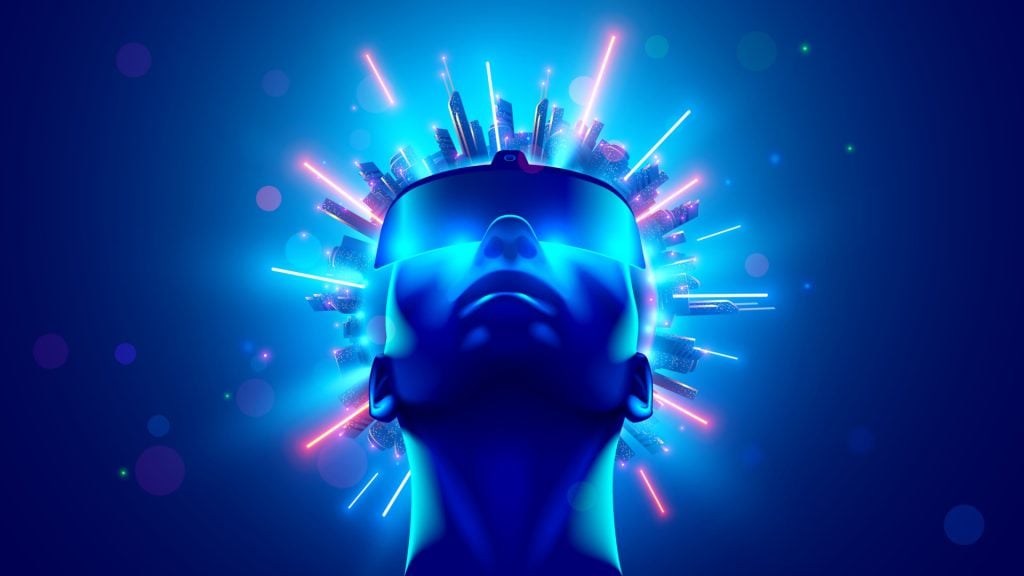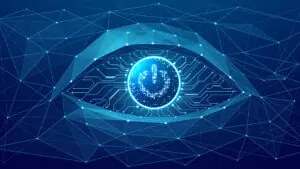What place will AI, blockchain and the metaverse have in the future of the economy? And where should we even begin to answer such a massive, open question?
Dr. Dennie Kim and Dr. Tim Laseter, both professors at the Darden School of Business, have advice for forward-thinking business leaders who want to navigate – and shape – this future. It’s about separating inflated expectations from the business scenarios that create real value.
Excessive expectations vs. potentially resolvable business cases
The past is full of examples of companies, products and ideas that have become media darlings, only to subsequently lose the public’s attention or fail to gain widespread acceptance. Gartner’s well-known Hype Cycle describes these phases of an innovation’s life cycle in detail: the publicity, excitement and failures that accompany the high point can be followed by a low point of declining interest. However, this does not necessarily mean that the technology is just a flash in the pan. Good implementation of good ideas changes the future.
Looking back at the recent past, we can learn from examples that show both exaggerated expectations and cases that promise – or have already delivered – real added value and mass adoption.
Artificial intelligence (AI)
An autonomous computer algorithm that can synthesize huge amounts of data and perform complex tasks.
Overdone?
In 1955, the term “artificial intelligence” is coined in a workshop proposal drawn up by Dartmouth, Harvard, IBM and Bell Labs. In November 1998, the term appears on the front page of Forbes: “Artificial Intelligence Gets Real”.
Enlightening?
Generative AI tools such as ChatGPT from OpenAI and Google Bard are disrupting traditional educational models. A GitHub survey found that over 90 percent of software developers use AI to speed up programming tasks.
The blockchain
A decentralized ledger system that can log millions of transaction events in real time.
Overdone?
In January 2022, Paris Hilton sells her non-fungible token (NFT) on the Tonight Show. In November of the same year, the cryptocurrency exchange FTX files for bankruptcy.
Enlightening?
By July 2023, Ukraine had raised more than $200 million in aid through cryptocurrency donations and projects around the world are working to use blockchain and cryptocurrency to enable market participation and economic development in developing countries.
Augmented reality (AR) and virtual reality (VR) headsets
Technology that helps to create a mixed reality by visually inserting digital images into the user’s physical environment (AR) or presenting a simulation of an interactive environment (VR).
Overdone?
In June 2012, Sergey Brin from Google presents the “smart glasses” Google Glass at the developer conference and shows a live demo of skydivers wearing the device and parachuting into the San Francisco Convention Center.
Enlightening?
In June 2023, Apple, which is known for developing consumer-oriented hardware and software, announces the market launch of its “spatial computing” Vision Pro, a 3D headset controlled by the user’s eyes, voice and hands, in June 2024.
The Metaverse
Digital extensions of the real world, powered by AR and VR.
Overdone?
In October 2021, Facebook founder Mark Zuckerberg announces that he will rename his company “Meta” to emphasize his plans to bring the metaverse to life.
Enlightening?
Founded in 2006, Roblox is a gaming platform where players can create and experience virtual experiences. It now has over 200 million active monthly users, over half of whom are under the age of 12.
Trillions and trillions
Major analysts from the technology industry now estimate that the value of these new tools could be in the trillions of dollars (and rising). McKinsey & Co. reports that AI alone could contribute up to 4.4 trillion dollars to global GDP every year.
But even for experts, it’s easy to get caught up in the hype. In 2017, strategy guru Michael Porter co-authored an article in the Harvard Business Review titled “Why Every Organization Needs an Augmented Reality Strategy,” in which he predicted that spending on AR would reach $60 billion by 2020. While the market grew from USD 5 billion in 2016 to over USD 40 billion in 2020, few companies have put it at the center of their business strategies.
What can be done in advance?
So how can company managers prepare for the future if they have not yet recognized the potential of what already exists?
Perspectives are not shaped by abstract lectures and ambitious ideals, but by stepping into this new digital world and taking a close look at the things around you.
The procedure is simple and practical: you put on a VR headset. You set up a blockchain wallet and carry out transactions. You write prompts to control an AI program. First-hand experience is a crash course in advanced, up-to-date digital skills. Only then will executives have the knowledge to think about what’s possible for their company – and hopefully some low-cost experiments to test hypotheses.
Ultimately, it is up to business leaders to decide whether they want to take an active or passive stance. But ignoring these digital assets altogether will not be an option. These new tools give them the power to shape – or be shaped by – this trillion-dollar digital asset landscape.
It is perfectly possible to be a technology skeptic in the short term and an optimist in the long term. The development of new technologies requires entrepreneurial investment, and successful companies will make their founders rich.
However, introducing technology into an existing business requires a different mindset. You should know what’s in the works, but don’t bet the whole company on it unless the technology could fundamentally change your business.
The potential for new business models and approaches to shared value creation cannot be overlooked: Blockchain technology is strengthening supply chains and providing greater transparency and security in the tracking (and monitoring) of vital goods such as food and pharmaceuticals. Public blockchains and cryptocurrencies allow people to send digital assets quickly, securely and cheaply. Web3 and these other digital tools have brought the ideas of decentralization, disintermediation and community into the public discourse, and regulation and political stances on digital assets are important campaign issues in the upcoming US elections.
New technologies can not only create opportunities for new companies and improve their capabilities, but also catalyze cultural and ideological change.


















